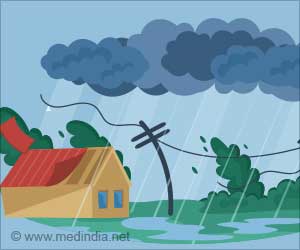Scientist's analysis has determined that the threat of global warming can still be greatly diminished if nations cut emissions of heat-trapping greenhouse gases by 70 percent this century.
Scientist's analysis has determined that the threat of global warming can still be greatly diminished if nations cut emissions of heat-trapping greenhouse gases by 70 percent this century.
The analysis was done by scientists at the National Center for Atmospheric Research (NCAR).While global temperatures would rise, the most dangerous potential aspects of climate change, including massive losses of Arctic sea ice and permafrost and significant sea-level rise, could be partially avoided.
"This research indicates that we can no longer avoid significant warming during this century," said NCAR scientist Warren Washington, the study paper's lead author. "But, if the world were to implement this level of emission cuts, we could stabilize the threat of climate change," he added.
Average global temperatures have warmed by close to 1 degree Celsius since the pre-industrial era. Much of the warming is due to human-produced emissions of greenhouse gases, predominantly carbon dioxide.
This heat-trapping gas has increased from a pre-industrial level of about 284 parts per million (ppm) in the atmosphere to more than 380 ppm today.
With research showing that additional warming of about 1 degree C may be the threshold for dangerous climate change, the European Union has called for dramatic cuts in emissions of carbon dioxide and other greenhouse gases.
Advertisement
They assumed that carbon dioxide levels could be held to 450 ppm at the end of this century.
The team's results showed that if carbon dioxide were held to 450 ppm, global temperatures would increase by 0.6 degrees Celsius above current readings by the end of the century.
In contrast, the study showed that temperatures would rise by almost four times that amount, to 2.2 degrees Celsius above current readings, if emissions were allowed to continue on their present course.
Holding CO2 levels to 450 ppm would have other impacts, according to the climate modeling study.
Sea-level rise due to thermal expansion as water temperatures warmed would be 14 centimeters (about 5.5 inches) instead of 22 centimeters (8.7 inches).
Also, Arctic ice in the summertime would shrink by about a quarter in volume and stabilize by 2100, as opposed to shrinking at least three-quarters and continuing to melt, and Arctic warming would be reduced by almost half.
Source-ANI
ARU









